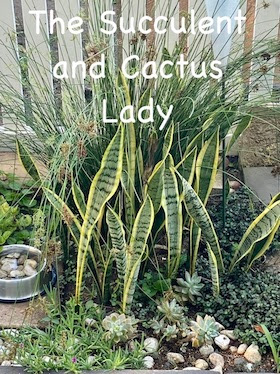About me

🌿 I've been gardening ever since a child, when I spent time with my father in his vegetable garden. But my fascination with Echeverias started in the 1980's, when my father gave me a pot with five Echeverias, which turned out to be E. imbricata. At first I wasn't much interested in them and planted them in some obscure corner of the garden and completely forgot about them. How great was my surprise when, a couple of months later, I noticed that they had spread and made a beautiful display - I was hooked!
Pages
Sunday 7 August 2016
Mammillaria cactus
For the first time in two years, my little Mammillaria cactus is flowering and I'm utterly thrilled!
The Mammillaria genus is generally found in the South-west United States and Mexico. Mammillaria species appreciate strong light, but many species dislike more than four hours of direct summer sunlight. Provide bright, even light for the best results. Allow the soil mix to become nearly dry between waterings, but then water thoroughly.
With nearly 200 recognized species, the genus Mammillaria is one of the largest of the cactus family, so I'm not even going to try and identify my little baby. Suffice it to say that he is very small with these dense, almost soft, thorns that are not much threat to the hand.
For the most part, these species are globose or ball-shaped plants which grow either solitary or in clumps. Mammillaria cacti can be propagated easily from offsets, which readily form in clusters around the base of the mother plant. To propagate, carefully remove the offset and allow the cut to dry on a paper towel for a few days. Depending on the size of the cut area, a callous will form over the cut surface. Once the callous has formed, place the new plant in a pot with a potting soil mixture and keep in a warm place until new roots emerge. Once the plant is established, re-pot it into a regular container.
If you can grow cacti and succulents successfully, you can likely grow the popular Mammillaria without too much trouble. To encourage better flowering, allow the plants to enjoy a cooling period in the winter and suspend watering. Unlike many other cacti, which use their ribs as storage devices, the Mammillaria feature raised tubercles, from which spines emerge. When you water, the tubercles will expand to allow for increased water storage. The flowers emerge from the axils of these tubercles on the previous year's growth, which accounts for their interesting halo effect. It's imperative that the cactus is not exposed to prolonged dampness and sitting water. Never let your cactus sit in a dish of water. Lastly, make sure to fertilizer during the growing season for the best results.
Subscribe to:
Posts (Atom)


